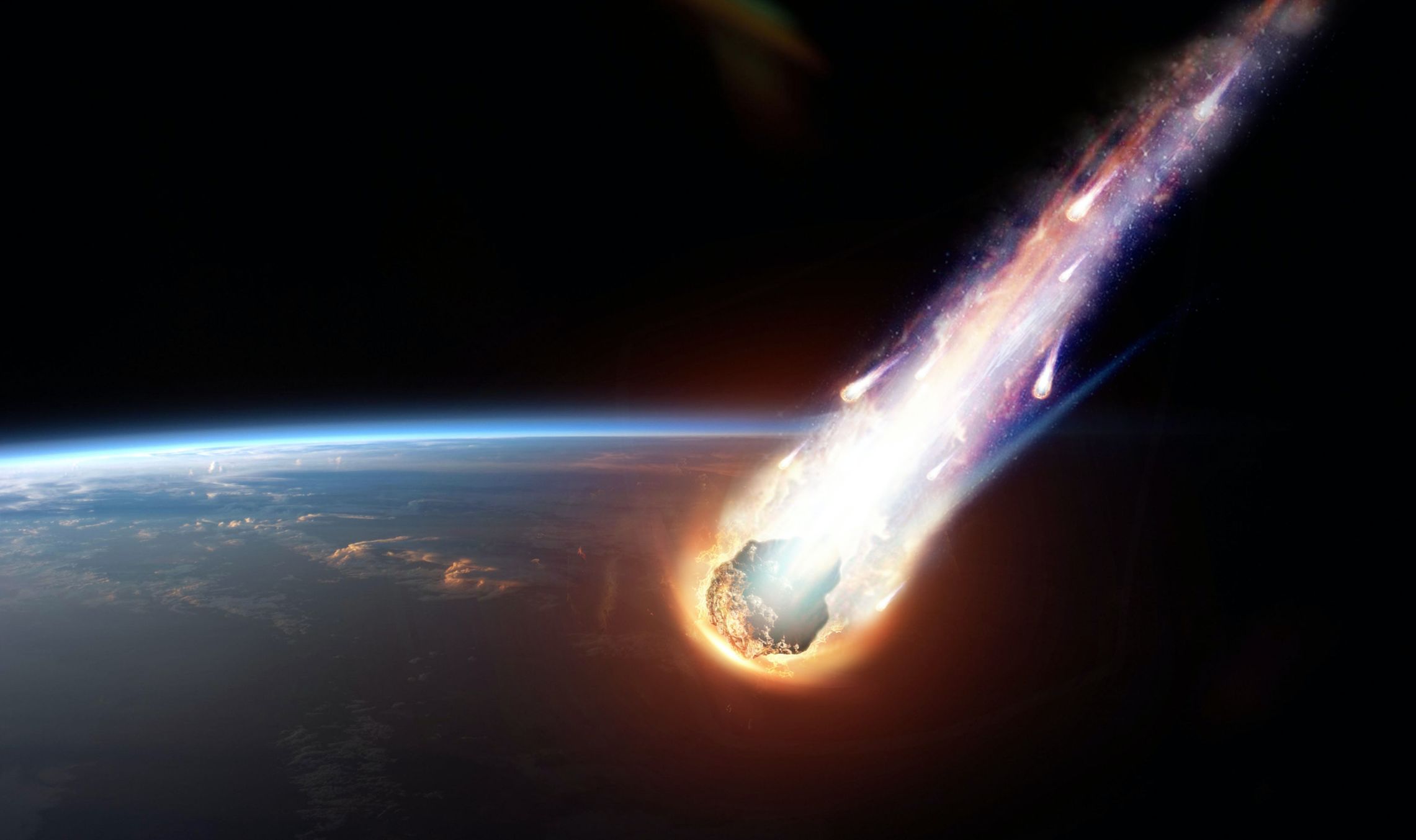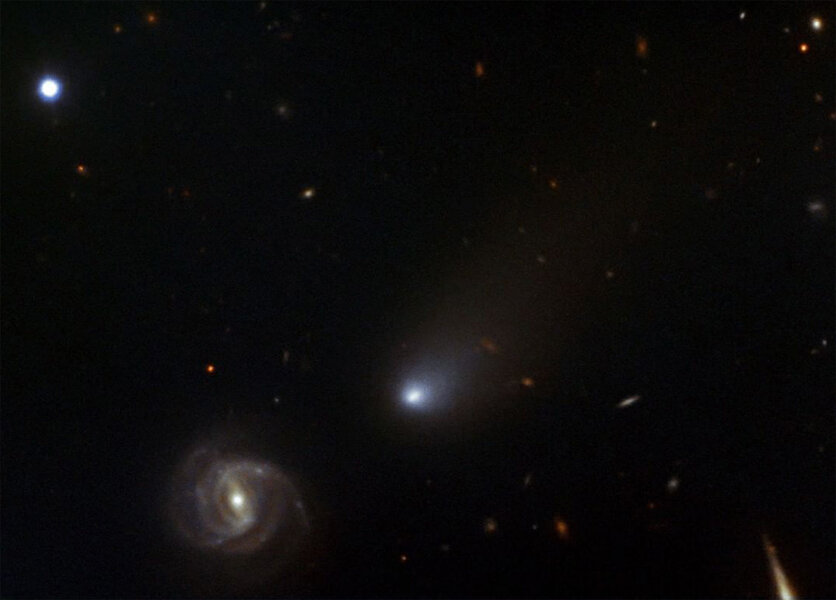Create a free profile to get unlimited access to exclusive videos, sweepstakes, and more!
Confirmed: An interstellar meteoroid - a rock from another star! - burned up in Earth’s atmosphere in 2014
It's the first interstellar meteoroid ever confirmed.

In 2017, astronomers confirmed the first interstellar visitor to the solar system ever observed: 1I/2017 U1 (‘Oumuamua), a frozen shard from another star system that passed relatively close to Earth. Then, just two years later, a comet from yet another star zipped past the Sun: 2/I (Borisov).
But hold the presses! It turns out ‘Oumuamua was not the first alien invader to our solar system ever seen. In 2014, the Earth was hit by a recliner-chair-sized rock that burned up in our atmosphere, and it too came from another star.
So how come we’re just hearing about this now? That’s a tale of government secrets, nuclear weapons testing, and, well, scientific cautiousness.
The solar system is littered with debris, mostly tiny chunks of rocky or metallic shrapnel from asteroid collisions or poofy dust clumps shed from comets, called meteoroids. The Earth gets hit by dozens of tons of this stuff every day. They move at fairly high velocity, a dozen or more kilometers per second, and when they ram through our air they compress it violently. The meteoroid’s energy of motion is converted into light and heat as it slams to a stop in just a few seconds, creating a meteor, commonly called a shooting star.
If the object is big enough — say, larger than a grapefruit — it gets pretty bright, and we call these events fireballs or more technically bolides. Sometimes these are seen by folks on the ground, but there are also automated sensors that can pick them up and record their light. That includes satellites that orbit the Earth and are pointed down; in 2019 for example it was determined that lightning detectors on NOAA satellites can see bolides.
That’s critical: If the path through the air can be found, then it can be traced backwards to determine the orbit the object was on before it smacked us. The velocity can be found as well.
These events are tracked by the NASA/JPL Center for Near-Earth Object Studies, and they keep a database online. This is a valuable research tool for scientists looking to investigate bolide impacts.
In the CNEOS database there are several bolides that hit Earth at unusually high speed. The fastest happened to be coming toward us head-on, so its velocity and Earth’s around the Sun added together, but a calculation of its orbit showed it definitely orbited the Sun.
But the second-fastest was different. This object hit Earth on January 8, 2014 at 17:05 UTC, burning up 18.7 kilometers over the Bismarck Sea, roughly 100 km NNE of Manus Island. It was moving extraordinarily fast, hitting us at nearly 45 kilometers per second!
In 2019, a pair of astronomers published about this roughly meter-wide bolide [link to paper], calculating its velocity and trajectory before it hit the Earth*. It was moving so rapidly that there was no way it was in a bound orbit to the Sun. It must have come from another star. In fact, given their math, they could state this with 99.999% confidence!
But there was problem. If you dig a little deeper into the CNEOS database, you can find a document with more info on this 2014 bolide. If you look at how the event was detected, you see it says, “…sensors aboard U. S. Government satellites recorded the flash signature of a large meteoroid entry into the atmosphere.”
That’s a little vague. What satellites, exactly?
Here’s where the spy novel stuff starts. The U.S. government has an understandable desire to keep track of what other governments are doing, especially when it comes to, say, detonating nuclear weapons on or above Earth’s surface. There are satellites that look for the flashes from explosions, but they also see any bright flashes in our atmosphere, including bolides. That information is very useful to astronomers, of course, but, also understandably, the U.S. government likes to keep their advanced imaging technology secret.
As a compromise they give limited data to NASA, enough to help but not enough to give any actual insight into the tech used to make the observations. That info goes to the CNEOS database, but is given the intentionally vague description “U.S. government satellites.”
It was one of those that saw the 2014 alien meteoroid. Since the details of the data are classified, it made scientifically confirming the event impossible, despite being enough to publish.
But things have changed a bit since then. For one thing, just recently the U.S. Space Force declassified decades worth of bolide data, a treasure trove of information that scientists can use.
And for another, on a panel at the Space Foundation’s annual Space Symposium in Colorado Springs, Colorado, U.S. Space Command deputy commander Lt. General John Shaw announced that he was a co-signor of a memo sent to the NASA Science Directorate head Thomas Zurbuchen confirming the existence of the interstellar meteor.
This was just last week! So yeah, there’s that.
And that’s how the actual first confirmed interstellar object was seen, albeit as it died spectacularly flaming out over the western Pacific Ocean.
Now to be clear, I’ll note this may not be the actual first one seen. High-velocity meteors are seen relatively frequently, and some have trajectories that are marginally consistent with what are called hyperbolic orbits, ones that are not bound to the Sun, meaning they could have come from interstellar space. The problem is figuring out if they really do come from Out There, or if they come from, say, comets that happen to be moving relatively rapidly and maybe got a boost from the gravity of Jupiter. Sometimes there’s just enough uncertainty in the observations to make them look hyperbolic when they’re not. This is tough work. There’s even some evidence that there may be small particles streaming toward us from the nearby star Beta Pictoris, which is very young, is still forming planets, and could eject these particles in our direction.
As for the 2014 bolide, it appears to have come from the general direction in the sky of the constellation of Aries. Given the size, speed, and mass of the object, the astronomers calculated there could be something like a hundreds of thousands of meter-sized objects inside the Earth’s distance from the Sun at any given time. The Earth is small compared to that volume, so even with that large number impacts are rare. But with all of this technology — newly declassified or otherwise — we should be seeing more alien meteoroids as time goes on.
* I’ll note that one of the authors is Avi Loeb, who has made some, um, unusual claims about ’Oumuamua with which I have profound disagreements. The science in the 2014 bolide paper looks good, though.



























